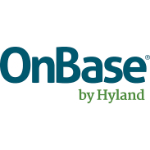List of Best Low Code Development Platform
Showing 10 of 36 productsAppian is a software for streamlining your business processes and boosting productivity. With its unbeatable features and user-friendly interface, Appian is the go-to solution for companies of all sizes. Say goodbye to inefficiencies and hello to sea...Read Appian Reviews
Airtable is a collaboration tool that helps teams organize and manage their work in a user-friendly way. With its intuitive interface and customizable features, Airtable streamlines complex processes and allows teams to work seamlessly together. From...Read Airtable Reviews
OutSystems, a leading low-code development platform, empowers businesses to rapidly create custom applications without the need for extensive coding knowledge. With its intuitive visual interface and built-in AI capabilities, OutSystems allows compan...Read OutSystems Reviews
Caspio is an all-in-one low-code platform that empowers businesses of all sizes to create custom web-based applications without coding. With powerful features such as drag-and-drop interface, robust reporting, and scalability, Caspio simplifies the p...Read Caspio Reviews
Mendix, a popular low-code development platform, is designed to help companies rapidly build and deploy applications to meet their business needs. With its intuitive visual interface and powerful collaboration tools, Mendix empowers users of all skil...Read Mendix Reviews
Kissflow Low Code is a and user-friendly platform that enables businesses to rapidly build and customize their own applications without the need for extensive coding knowledge. With Kissflow, streamline your processes and accelerate your digital tran...Read Kissflow Low Code Reviews
Pega 7 is the revolutionary software that is transforming businesses around the world. With its advanced capabilities and user-friendly interface, this platform empowers organizations to streamline their operations, improve customer experience, and d...Read Pega 7 Reviews
Visual LANSA is a highly versatile is a software development platform that empowers businesses to create and maintain enterprise-grade applications with ease. With its intuitive and user-friendly interface, Visual LANSA streamlines the development pr...Read Visual LANSA Reviews
OnBase is a solution for all your document management needs. With its user-friendly interface functionality, OnBase streamlines your document processes, saving you time and increasing efficiency. Say goodbye to paper clutter and hello to organized, d...Read OnBase Reviews
UI Bakery is a platform that empowers businesses and individuals to create stunning and functional user interfaces without the need for coding. With its drag-and-drop interface and pre-made components, UI Bakery streamlines the UI design process, sav...Read UI Bakery Reviews
- What Is Low Code Development Platform?
- Top Reasons Why Businesses Need Low Code Development Platform?
- What Are the Top Key Features of Low Code Development Platform?
- What Are the Top Benefits of Low Code Development Platform?
- What Are the Steps to Choose the Right Low Code Development Platform?
- What Are the Types of Low Code Development Platform for Different Industries?
- What Are the Technology Trends for Best Low Code Development Platform?
- What Are the Deployment Options for Low Code Development Platform?
What Is Low Code Development Platform?
Low code development platforms are software-based technologies that allow enterprises to rapidly construct and deploy mobile and online applications with little or no coding. It is a platform that enables developers to create digital apps quickly and visually.
You can create applications with a low-code development platform by dragging and dropping a collection of predefined components into a user interface. The approach eliminates most of the coding that would otherwise be required, speeding up development and allowing non-developers to participate in the building of apps.
Platforms for low-code development can be advantageous to both large and small businesses. Large organizations can minimize their overhead or the need to hire additional developers or staff to develop a digital product, whereas small businesses can reduce the cost of employing a team of developers and shorten the time it takes to construct a product.
Low code development tools serve as a "bridge" between no-code and full-code development methods, combining the best of both worlds. Businesses can benefit from faster development and fewer procedures by using a codeless strategy.
Top Reasons Why Businesses Need Low Code Development Platform?
1. Low cost of development: When compared to a traditional coding technique, low code platforms make it simple and cost-effective to design, maintain, and deploy commercial applications in a fraction of the time.
2. Increased agility: Low code development platforms enable enterprises to quickly create apps from prebuilt modules without having to start from scratch with code.
3. Increased productivity: Low code development software allows enterprises to design and launch apps in days rather than weeks or months.
4. Lower risk: Low-code development platforms can reduce deployment costs and complexity.
5. Improved maintenance and support: In the long run, low code platforms make it easier for enterprises to manage and support applications.
6. Increased user adoption: Low-code platforms provide an intuitive user experience by utilizing drag-and-drop components and wizards.
7. Access to more features and tools: Low code platforms give users access to a library of components and functionalities, making it easy to create and customize applications.
8. Easier application integration: Low-code development platforms make it easier to interact with other services and systems, such as those provided by third-party vendors.
9. Improved user collaboration: Low code platforms allow numerous people to work on an application at the same time, making the development process more efficient.
10. Increased flexibility: The top low code development platforms enable firms to swiftly and easily adapt to changing client needs.
11. Enhanced security: Low code platforms are intended to guard against vulnerabilities, hence ensuring application security.
12. More reliable applications: Businesses can use low-code platforms to design and deliver reliable apps with fewer defects.
13. Scalability: Low code platforms enable businesses to quickly and effectively scale apps as their needs evolve.
14. Accessible development: Individuals with little coding skills can develop and manage applications using low code development platforms.
15. Reduced development time: Low code platforms allow enterprises to design and deliver apps far faster than traditional coding methods.
What Are the Top Key Features of Low Code Development Platform?
The top key features of low code development software include:
1) Visual Programming: Visual programming enables developers to construct digital apps fast with little or no technical coding knowledge. To construct logic and application logic, simpler graphical user interfaces (GUIs) and drag-and-drop functionality are used.
2) Rapid Development: Low code development platforms enable developers to quickly construct ready-to-deploy solutions. This saves time by eliminating the need for sophisticated coding and swiftly constructing the full development pipeline.
3) No IT Expertise: The top low-code development platforms are intended for people with little technical or IT background. This attribute makes them ideal for businesses with limited engineering or programming resources.
4) Cloud Integration: Most low-code development platforms can connect to a variety of cloud services and apps, making it easy to integrate an application with existing infrastructure.
5) Security and Compliance: Low code development platforms are intended to add an extra layer of security and compliance to any application code, ensuring that it complies with industry standards and security best practices.
6) Customization: Many low-code development platforms have extensive customization options, allowing developers to modify their apps to match their individual requirements.
7) Automation: Many operations, including code reviews, building, testing, and deployment, can be automated using low-code development platforms. This speeds up development while reducing manual labor.
What Are the Top Benefits of Low Code Development Platform?
1. Faster time-to-market: Low-code platforms enable developers to construct applications quickly and easily, dramatically lowering the time it takes to build and deploy apps.
2. Increased accuracy: Developers can simply and consistently construct apps that are carefully tested for accuracy and dependability by leveraging a low-code platform.
3. Improved scalability: Using a low code development platform frees up programmer resources, allowing them to focus on developing other features and allowing for faster application growth.
4. Reduced costs: Low-code platforms save money by requiring less resources to design and maintain programs.
5. Flexible hosting options: Low-code platforms enable you to host apps in the cloud or on-premises, giving you more control and scalability.
6. Easy to maintain: The low code development tools have an easy-to-use interface and enable quick responses to user requests, making application maintenance easier and faster.
7. Automation capabilities: Low-code platforms are built with automation efficiency in mind, and include features like code reuse to speed up development.
8. Bridging technical gaps: Low-code platforms are well-equipped to bridge technical barriers between developers and non-technical users, allowing everyone to work on the same application more easily.
What Are the Steps to Choose the Right Low Code Development Platform?
1. Identify your specific need: You should identify the capabilities and services that you require for your specific project before selecting a minimal code development platform. If you're only searching for a platform to swiftly design user interfaces and mobile applications, limit your search to platforms that specialise in those areas.
2. Consider key features: The characteristics that are most relevant to your project should guide your choice of a minimal code development platform. Support for major programming languages, a drag-and-drop interface, easy pair programming, integrated cloud services, UI frameworks, and scalability choices are all popular characteristics to consider.
3. Compare user experience: The user experience is an important factor in identifying the best low code development platform. Consider how the platform appears, feels, and functions from the standpoint of the user. Read consumer reviews as they provide information about the platform's usability.
4. Evaluate pricing: Finally, you should choose a minimal code development platform that falls inside your budget. Compare several vendors' pricing models and join their respective forums to ask inquiries.
5. Select a vendor: Once you've examined features, user experience, and cost, restrict your list down to one vendor. Before committing to the platform, make sure to read the vendor's terms of service.
What Are the Types of Low Code Development Platform for Different Industries?
Low-code development platforms have become increasingly popular due to their simplicity and flexibility. Low-code platforms are used in many different industries to facilitate the development of custom applications to meet their unique needs.
Here are a few types of the best low-code development platforms applicable to different industries:
1. Enterprise-grade Low Code Development Platforms: These platforms are intended for major companies that require the ability to construct powerful and comprehensive applications to fulfill the specific needs of the enterprise.
2. Customer Relationship Management (CRM) Low Code Development Platforms: These systems are intended to make it easier for businesses to handle client data and interactions. It can help you improve customer service, lead tracking, and other processes.
3. Business Process Management (BPM) Low Code Development Platforms: Organisations can use these platforms to easily construct business process flows in a drag-and-drop environment. It assists firms in the capture, modeling, analysis, automation, and optimization of both automated and manual business processes.
4. Artificial Intelligence (AI) Low Code Development Platforms: These platforms are used to create apps that rely on machine learning and artificial intelligence models. These platforms can be used to swiftly and cost-effectively design and deploy complicated AI systems.
5. Internet of Things (IoT) Low Code Development Platforms: These platforms are used to develop applications that enable various IoT devices to connect and collaborate with one another. These applications allow data-driven insights for better decision-making by exploiting the possibilities of the Internet of Things.
What Are the Technology Trends for Best Low Code Development Platform?
The technology trends for best low code development platforms includes:
1. Increased Use of Serverless Technologies: Serverless technologies such as AWS Lambda and Microsoft Azure Functions are becoming more popular in minimal code development as the desire for rapid deployment and cost-effectiveness grows.
These technologies provide a faster and easier development process, as well as the ability to swiftly build and deploy cloud applications.
2. Usage of Business Intelligence Platforms: Low-code development platforms are increasingly integrating with business intelligence platforms in order to increase app performance and make data integration easier. This gives for a better knowledge of the underlying data in an application and allows for speedier data-driven decision-making.
3. Purpose-Built User Experience: Low code platforms are intended to help developers and non-technical people produce user-friendly applications. These platforms often include UI features built into the technology to make designing intuitive user experiences easier.
4. Automation: Automation is being used more and more in low code platforms to boost development speed and accuracy. Businesses can reduce development costs and eliminate the need for manual coding by utilising automation.
5. Easy Implementation of Security Roles and Blocks: Low code platforms make it simple to create security roles and blocks to secure sensitive user data. This is critical for assuring application security and compliance with industry laws.
What Are the Deployment Options for Low Code Development Platform?
A low-code development platform has four basic deployment options: web-based deployment, desktop deployment, in-house hosted deployment, and cloud-based deployment.
1. Web-based deployment is the easiest and most cost-effective method, as users only require an internet browser to use the low-code platform's apps.
2. Desktop deployment enables users to execute applications on their desktop computer rather than a web browser. This solution, however, necessitates additional effort to maintain and update the programs.
3. In-house hosted deployment necessitates the company purchasing and maintaining servers to host the applications, which can be an expensive approach for some businesses.
4. Because programs are hosted off-site in an external server and all updates are handled, cloud-based deployment provides the most flexible and lightweight approach. This also allows for greater scalability and lower expenses.










